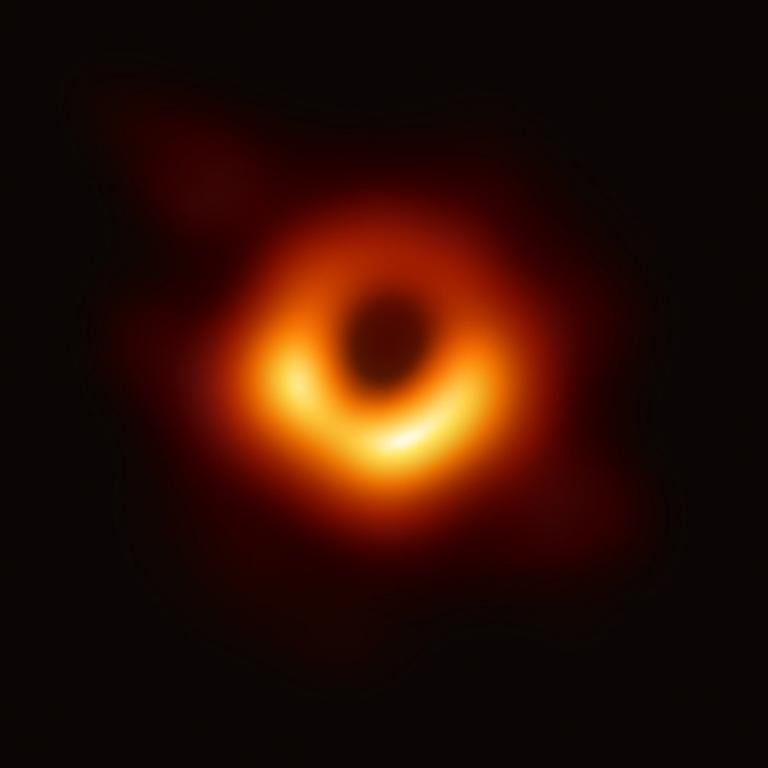
We used to think that science is reductionistic, that once we have a “scientific” explanation we now understand it, the mystery is banished, it’s no longer a big deal, and we can move on. But now science has come so far that the more we understand the physical world, the more mysterious it becomes. I am currently awestruck that scientists have photographed a black hole–described as “perhaps the most profoundly mysterious objects in the universe”–and that we can actually see one of these mind-confounding cosmic paradoxes.
We aren’t seeing the black hole, of course, since its gravity is so massive that light cannot escape from the thing. (That’s one of its weird properties that we are witnessing.) What we are seeing is the “event horizon,” the area around the point of gravity collapse, specifically the gasses that are falling into it. As material gets so close to the black hole, it is accelerated so much that it approaches the speed of light. When it does that, it gives off energy in different forms that we can detect and that is the basis of this visual image. (Here is how the photograph was made.) So what we are seeing is gas that is moving at close to light speed as it is being torn apart and annihilated. (That’s another weird thing we are witnessing.)
But the weirdness is only beginning. At the event horizon, time slows down. (We are seeing where that happens.) Whatever falls into the black hole would be pulled into the center, the “singularity,” described as “an inconceivably small point with a monstrous mass where gravity and density theoretically approach infinity and space-time curves infinitely.” Here the laws of physics are confounded–both Newtonian physics and quantum physics.
This particular black hole is in the M87 galaxy and is between 3 and 7 billion times more massive than our sun. What we are looking at is about 38 billion kilometers in diameter, some 23.6 billion miles. (Also awe-inspiring.)
And the human ingenuity that found a way to take a picture of this object, orchestrating nine radio telescopes located around the world to create, in effect, a telescope the size of Planet Earth is also awe-inspiring.
A FURTHER SUBLIMITY: The existence of black holes was not just a matter of empirical observation, a case of observing something in nature and studying it closely, the way we think of science normally working. The notion of black holes began as a theoretical construct, working out the implications of the empirically-derived laws of physics in light of Einstein’s theory of relativity and the relationships between gravity, space, and time. Black holes were a mathematical conclusion. (Read about this theoretical development here.)
Then and only then did scientists have an idea of what to look for, and, sure enough, astronomical data was discovered that suggested that black holes were not simply an idea but that they exist in the objective universe. And, lo and behold, now we can perceive one.
But the idea came before the observation. It is awe-inspiring to realize that the mental operations of mathematics, existing only in the mind, give an exact account of the external material universe. This connection between mind and reality may be the biggest mystery of them all. This suggests that there is a Mind behind the universe, though one far beyond our own.
Photo by Event Horizon Telescope – https://iopscience.iop.org/journal/2041-8205Astronomers Capture First Image of a Black Hole at the Wayback Machinehttps://eventhorizontelescope.org/files/eht/files/20190410-78m-4000×2330.jpg?m=1554877823, CC BY 3.0, https://commons.wikimedia.org/w/index.php?curid=77916840














